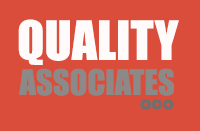ISO 14001- Introduction
The first environmental management system standard is BS 7750 published in 1992. Then the ISO14000 family created in 1996. ISO 14001 was first published in 2004 by the International Organization for Standardization (ISO). The current version of ISO 14001 was released in September 2015. ISO 14001 is defined as the international standard that specifies requirements for an environmental management system (EMS). Organizations use the standard to demonstrate the ability to consistently provide products and services that meet customer and regulatory requirements.
Keys to success ISO 14001:2015 implementation are;
 Management commitment
Management commitment Adequate resources to establish, implement, and maintain the EMS.
Adequate resources to establish, implement, and maintain the EMS. Assigned roles, responsibility, and authorities
Assigned roles, responsibility, and authorities Appropriate procedures and documentation
Appropriate procedures and documentation Awareness, Competence and Training
Awareness, Competence and Training Resources management and Continual improvement
Resources management and Continual improvement

